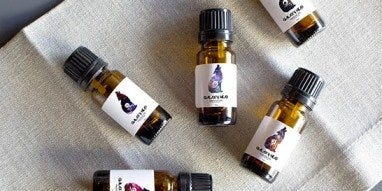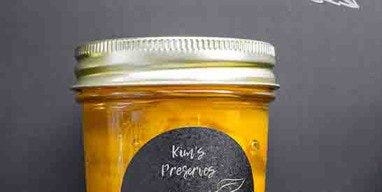A Guide to Building Your First Ship in a Bottle
https://pixabay.com/photos/ship-in-a-bottle-the-ship-london-92542/
A Guide to Building Your First Ship in a Bottle
A ship in a bottle is a timeless piece of folk art that inspires awe and curiosity. These ships are a puzzle, constructed to resemble anything from modern day boats to historical ships with impossibly tall sails. As a beginner, learning the tricks of the trade with a simpler ship can be a great way to determine what techniques work best for you, what type of ship you want to make, and what bottle you wish to display it in. With the immense amount of information available to model ship builders, and the seemingly impossible feat of building a ship in a bottle, it can be hard to determine where to start. While there are several simple, basic ships to choose from, one of the easiest for beginners may be the Raingutter Regatta kits.
The Raingutter Regatta is a type of ship that is made by hand, originally made as a parent-child project for the Boy Scouts of America event of the same name. Using the basic materials from the Raingutter Regatta kit, along with a few extra materials, the following tutorial provides an easy method of building an intricate, beautiful sailboat. Of course, building even the simplest of ships will take a lot of time, patience, and perseverance.
What You Will Need
While there are several different types of ships in a bottle that require different resources depending on their individual parts and requirements, the materials needed to make this sailboat are relatively easy to work with in comparison. With the Raingutter Regatta kit and a few additional resources, including tissue paper for sails, you can transform simple materials into a work of art. Once you have familiarized yourself with the steps and basic techniques of building your first ship in a bottle, you will be better prepared to take on larger projects. Before you get started, you will need to ensure you have scissors, tweezers, nail clippers, cotton swabs, and a pencil, pin vise drill, paintbrush, steel ruler, and a knife available, as these will be the tools you use to construct your ship.
Here are the materials you will need to make your very first ship in a bottle:
- Raingutter Regatta Kit
- A glass bottle or jar to construct your ship inside (A plastic jug, such as a 3-liter soft drink container, can also be used)
- Bamboo skewer or 1/8-inch dowel
- Hobby basswood
- Black and tan quilting thread
- Florist's wire
- Tissue paper
- Straight pins
- Shellac
- Blue paint
- White glue
- Epoxy
- Sandpaper
What Bottle to Choose
Choosing the right boat to create is an important decision to make, however, choosing the right bottle is just as crucial to the overall appearance and dimensions of your ship. Glass bottles are a more traditional choice. A clear glass bottle, without flaws or raised lettering, is often preferred, such as the classic whisky bottle. A whiskey bottle with flattened sides will also be helpful in ensuring your project does not move or roll as it is being constructed. Rounder bottles will need to be secured at the base to avoid disturbing your progress. Now, depending on the size of your project, you will want to determine whether a smaller bottle or a bigger bottle would be better suited to your needs. Plastic jugs can also be used, and may be a more readily available, and cheaper, option for beginners.
How to Make a Ship in a Bottle Step-by-Step
In order to make your very own ship in a bottle, follow the step-by-step instructions below very carefully. If you get frustrated, do not worry, even professionals need to step away from their projects every now and again, until they are ready to continue. Here are the 18 steps you will need to follow:
Step 1
Ensure your bottle, jar, or jug is clean, both inside and out, and remove any labels. Take your blue paint and paint a rectangular section, long ways, along the inside to represent the sea. The size will vary depending on your bottle, however, for a 3-liter jug, you would want to paint an area of about 2 ½ inches across by 7 inches long.
Step 2
The size and dimensions of the Raingutter Regatta hull vary depending on type. For a traditional hull, trim it down until it is about 1 inch wide. You may glue discarded pieces to the base of your bottle, to secure it, if you so desire. For a modern Raingutter Regatta Trimaran hull, take to balsa wood outriggers and glue them together. Afterwards, trim it down until it reaches a width of 1 inch.
Step 3
You will need to cut the bottom of the hull until it is ½ inch deep, this will allow it to fit through the mouth of the bottle or jug. Now you can cut off the hull in front of the mast hold and begin shaping it to that it looks like a ship resting above the waterline. Proceed to round the bottom corners of the hull, for a realistic appearance, then sand and seal it with shellac.
Step 4
From your Raingutter Regatta kit, cut the mast so that one piece is 3 ¾ inches long. This will be the mast used on your craft. What is leftover will be used for the bowsprit, the piece that sticks out the front of the ship. Next, drill a small hole near the bottom of the mast, towards the end of the bowsprit.
Step 5
Now it is time to fit your ship into your chosen bottle. In order to get your craft into your bottle, you will need to ensure your mast is hinged. Next, take a 2-inch segment of florist's wire and pull it through the hole in the mast and bend it into a 'U' shape to make a hinge. Then, drill two small holes into the hull for the wires to be pulled through. Make sure you try swinging the mast up and down to ensure it moves appropriately, then bend any excess wire against the bottom of the hull.
Step 6
Next, epoxy the bowsprit to the hull, placing it on the side of the hull with a hole in the far end. Let this dry overnight.
Step 7
Take your bamboo skewer or dowel and cut three pieces with the following lengths: 3 ½ inch, 2 ½ inch, and 1 ½ inch. The longest one will be the spar, which holds the main sail. The shortest one will be the gaff, which holds the top of the gaff sail. The middle one will be the boom, which holds the bottom of the gaff sail. Afterwards, drill holes into the base of the shortest sticks. If you are unfamiliar with the parts of a ship looking at model designs may help alleviate any confusion.
Step 8
Next up, it is time to make the sails. While a rectangular paper sail comes with the kit, we will instead use tissue paper cut into triangular sails. Taking your tissue paper, cut your sail to the approximate size and shape you desire, model plans and images may help you decide on the exact shape you wish your sail to be, making it slightly bigger than your desired length so you can fold the edges. Take your paper and make a 1/8-inch seam on each edge, folding and gluing down each of these seams. While the glue dries, cut a 10-inch length of tan thread. Now, fold the long edge of the triangular sail, called the jib, over the tan thread and glue the thread inside the seam with 3 inches at either side.
Step 9
Cut three pieces of black thread and tie them ½-inch from the top of the mast. It is always best to cut these threads longer and cutting off the excess after tying them off to the appropriate places. These three threads will hang down on each side to represent shrouds. Cut another black thread, this one measuring 2 feet, and tie it near the top of the mast, this will be the stay.
Step 10
Take your longest stick and tie it to the front of the mast. Then, take the shortest stick and tie it to the back of the mast, near the shrouds. The middle stick should be tied to the back of the mast about 3/8 inch from the base. Take your thread and loop in through the small holes in the bases of the two backward pointing pieces. Tie this loop to the mast to secure it, ensuring all sticks still swing freely.
Step 11
Gather your straight pins and push one pin on each side of the hull, near the stern. Afterward, push three pins into each side of the hull, behind the mast, about 1/8 inches apart.
Step 12
Next, thread your stay through the hold at the end of the bowsprit, pulling the mast until it stands almost completely upright. Take your thread and wrap it around the bowsprit about 20 times but do not tie it off.
Step 13
Take the threads that make up your shrouds and tie them to the pins on the alternate sides, ensuring the mast does not lean or get pulled sideways. All lines should be tight and taut so that the mast cannot move.
Step 14
Now that your black threads have been tied down, take the tan thread and tie it to the sticks so that they cannot move. In the end, the spar has a line running from the end of it to the pin at the back of the boat. The two pieces behind the mast should have three lines holding it in place. One of the three lines that make up the shroud should run from the tip of the piece to the top of the mast, with the other two running from the end of the stick to the sides. Ensure you tie one line on each side until the piece cannot move.
Step 15
Take your glue and glue the main and gaff sail in place then tie the jib to the stay. Leave the craft to dry overnight.
Step 16
Unwrap and loosen the stay and push the mast back. Carefully, fold everything along the mast until everything is pointing straight back. This will allow your model to fit into the mouth of the bottle.
Step 17
Take your epoxy and spread it in the bottle in the middle of your painted water. Gently, slide the boat into the bottle and onto the epoxy, positioning pieces where you need them to be with a rod. Ensure the end of the stay hangs out of the bottle and let the epoxy dry.
Step 18
Once your glue and epoxy are completely dry, pull the stay to pull the mast up and let the mainsail swing out. Pull the stay taut and glue to the bowsprit, then let dry. Cut off any excess string.
Tips and Tricks
After completing your project, there are several ways in which you can enhance the appearance of your boat if desire to do so. The addition of paint, figurines, or realistic details can you're your art a more realistic appeal. Using coffee or tea to soak the paper used to construct your sails can give it the sea-worn, canvas look of older ships. Using putty to create calm waters or waves can give your ship the appearance of sailing on the sea, within your bottle. Beginners who wish to try a different type of boat construction, to save some time and work, can also try building a waterline ship, one that rests on a sea made of modeling clay or plumber's putty. This type of ship only requires you to build half the hull, as the other, non-existent, half will appear to be resting beneath the waves. For added dimension and taller sails, there are several sources of modeling plans available online. Modeling plans can also aid you in finding a variety of ways to add details and personalize your craft.
Resources
For more information regarding building a ship in a bottle, follow the resources listed below:
- Building a Ship in a Bottle
- History of Ships in a Bottle
- What You Will Need to Create a Ship in a Bottle
- Easy Nautical Craft
- Small Ship in a Bottle Tutorial
- The Origins of Ships in a Bottle
- Overview: Ships in a Bottle
- Ship in a Bottle: Constructional Methodology
- The Secret to Making a Ship in a Bottle
- What Do You Need to Build a Ship in a Bottle?
- World's Largest Ship in a Bottle
- Rigging Tips
- Ship Modeling: Getting Started
- Types of Model Ships
- Models of Historical Ships
- Simple Ship in a Bottle
- Real Ships and their Replicas
- Model Making Techniques









